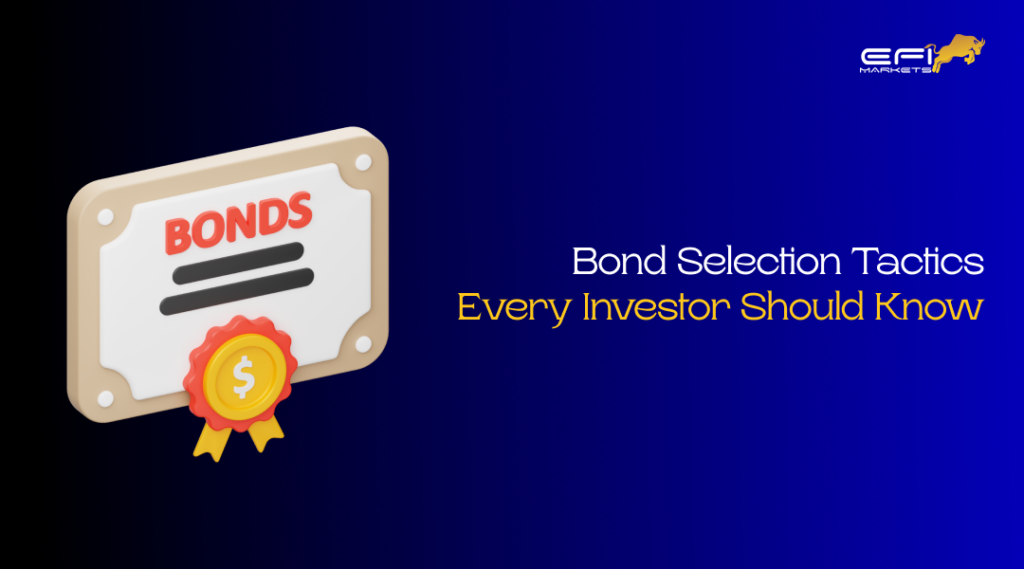
The safest government bonds often offer extremely low yields, but higher-yielding corporate bonds are more likely to default, thus investors wishing to add bonds to their portfolios must make a trade-off.
High-yield corporate bonds often carry higher risk. U.S. Treasury bonds, which are typically regarded as one of the safest investments available, are at the other end of the range. So how can investors select the bonds that they want to include in their portfolios?
Tips to select and invest in best bonds
Bond investments should be made after:
- Find out when bonds expire. The date when you will get a return on your investment is known as the maturity date. Know how long your money will be locked within the bond before you commit your finances.
- Understand the bond’s rating. The rating of a bond provides information about its creditworthiness. The danger that the bond may default and you lose your investment increases with a lower grade. According to the Standard & Poor’s rating system, AAA is the highest grade. The danger of default is largest for poor quality or junk bonds, which are defined as those having a grade of C or worse
- Look at the track record of the bond issuer. When considering whether to invest in a company’s bonds, understanding the company’s history might be beneficial.
- Recognize your level of risk tolerance. Lower credit-rated bonds often have higher yields to make up for their greater levels of risk. Consider your risk tolerance carefully and stay away from investing just on yield.
- Consider macroeconomic risk factors. Bonds lose value as interest rates increase. The chance that rates will fluctuate before the bond reaches its maturity date is known as interest rate risk. Avoid trying to time the market, though; interest rate movements are unpredictable. Instead, put your attention on your long-term investing goals. Bonds are at risk from rising inflation.
- Support your more general investing goals. Bonds should balance out your investment in stocks and other asset classes and serve to diversify your portfolio. You can wish to use an asset allocation calculator based on age to ensure that your portfolio is properly balanced.
- Carefully read the prospectus. If you plan to invest in a bond fund, make essential to research the costs and determine precisely what kinds of bonds are included in the fund. The name of the fund could only give a partial picture of what it invests in; for instance, government bond funds occasionally also own non-government bonds.
- Make use of a broker with experience in bonds. If you’re buying individual bonds, go with a company that is familiar with the bond market. To help you locate reputable individuals who can assist you in opening a brokerage account, use FINRA BrokerCheck.
- Find out about any commissions and costs. The breakdown of the costs related to your investment might be aided by your broker.
What is the need to look after bond selection?
- Risk management: It can lower the likelihood of a default and stabilize the portfolio as a whole.
- Revenue generation: Choosing bonds with appealing yields and regular coupon payments can have a big impact on total revenue.
- Capital preservation– Choosing bonds with solid credit ratings, minimal default risk, and high quality can assist safeguard the original investment.
- Portfolio diversification: Investors can lower overall risk and improve risk-adjusted returns by diversifying their holdings of bonds over a range of maturities, issuers, and credit quality.
- Accessibility and liquidity – Choosing bonds that are liquid helps investors to acquire and sell their securities, assuring liquidity when needed.
Wrap
Investors should have in-depth understanding of the function of bonds, their kinds, and their risk-reward profiles in order to choose bonds with effectiveness and wisdom. In addition to balancing stability, income production, and growth potential while building a bond portfolio, a sensible investor will consider both short- and long-term goals. Additionally, it is essential for investors to stay current on market trends and advancements in the world economy.
Knowledge, analysis, and deliberate decision-making are essential components for mastering bond selection. By honing these abilities, investors will be able to navigate their investing path with security and confidence and finally reach their financial objectives.
